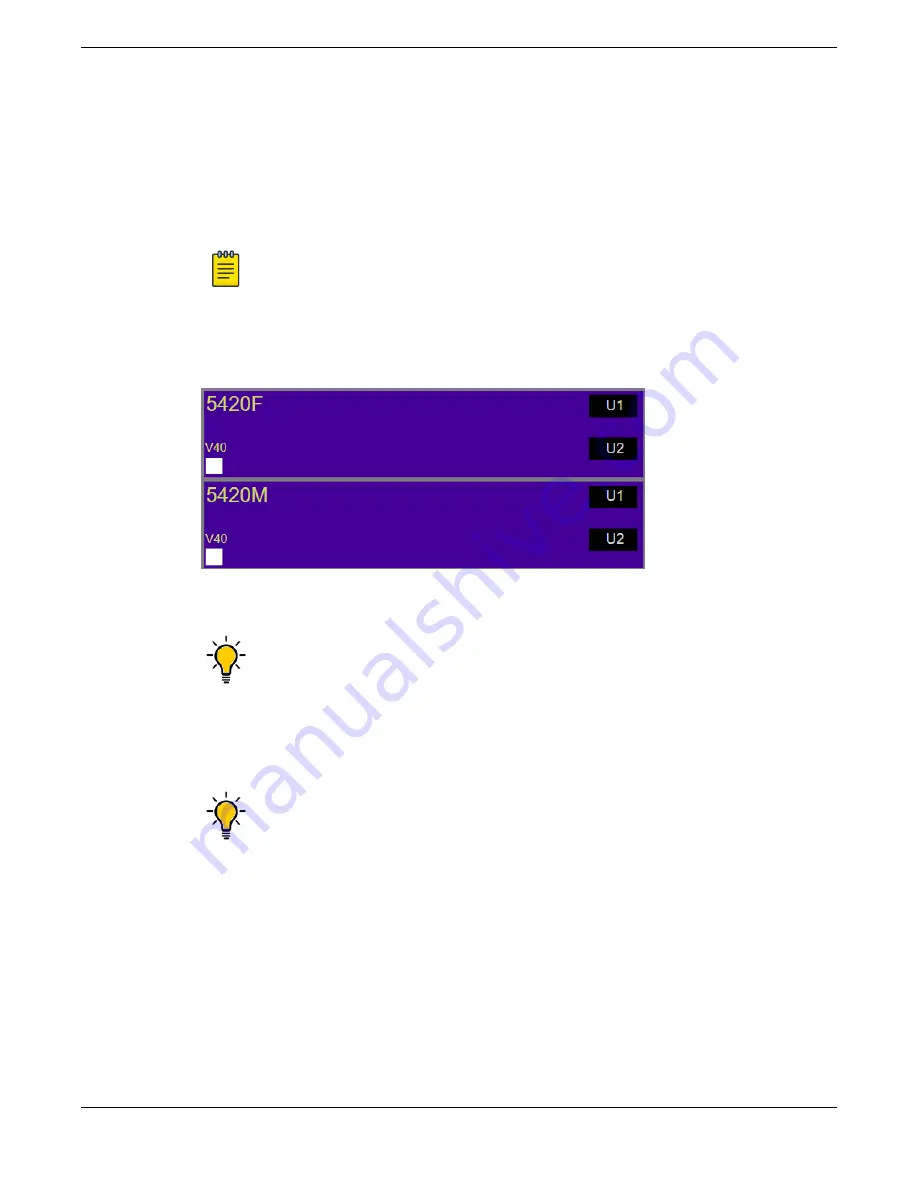
•
Recommendations about which switches should be the primary and backup nodes.
•
Information about the supported versions of ExtremeXOS for every combination.
To use the Stacking Tool, follow these steps.
1. Open the Stacking Tool (
https://stackingtool.extremenetworks.com/StackingTool/
) in a web
browser.
Note
The Stacking Tool is also available in the Support Tools section of the Extreme Portal.
2. Find a switch model in the
Switches
column.
Each switch model is represented by a rectangle, as shown in the example in the following figure. In
this example, stacking ports are represented by U1 and U2 on the right side.
Figure 39: 5420 Switches Shown in the Stacking Tool
Tip
Select a rectangle to display more information about the switch model and the VIMs (if
any) that it can use for stacking.
3. Drag the rectangle to the first slot in the Stack column in the middle of the page.
To the right of the Stack column, the tool displays statistics about available routes, supported
software versions, and primary/backup recommendations.
Tip
If you don't see statistics and other information, select the arrow (> symbol) to the
immediate right of the Stack column.
4. Use the tool in any of the following ways:
•
Select other switches and drag them to the slots in the stacking column.
•
For any switch in the stack, select the S1 and S2 symbols to choose stacking methods – for
example, SummitStack-V and SummitStack-V80 (supported in EXOS 30.1 and prior releases
only).
•
To remove a switch from the stack, drag it away from the stacking column.
Whenever you add or remove a switch from the stack, the statistics and recommendations update
automatically.
Building Stacks
Using the Extreme Stacking Tool
ExtremeSwitching 5420 Series Hardware Installation Guide
65






























